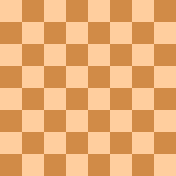
- Chess World Cup
- FIDE Grand Prix
- Olympiad
- World Championship
- List of strong tournaments
- List of world championships

- Checkmate patterns
- Chess openings
- Chess strategy
- Chess tactics
- Chess theory
- Endgames
- Pawn structure
- Problems/Compositions












|
|||||||||||||||||||||||||||||||||||||||||||||
| Moves | 1.e4 c5 2.c3 | ||||||||||||||||||||||||||||||||||||||||||||
|---|---|---|---|---|---|---|---|---|---|---|---|---|---|---|---|---|---|---|---|---|---|---|---|---|---|---|---|---|---|---|---|---|---|---|---|---|---|---|---|---|---|---|---|---|---|
| ECO | B22 | ||||||||||||||||||||||||||||||||||||||||||||
| Named after | Semyon Alapin | ||||||||||||||||||||||||||||||||||||||||||||
| Parent | Sicilian Defence | ||||||||||||||||||||||||||||||||||||||||||||
In chess, the Sicilian Defence, Alapin Variation is a response to the Sicilian Defence characterised by the moves:
It is named after the Russian master Semyon Alapin (1856-1923). For many years it was not held in high regard, since 2...d5 was thought to allow Black easy equality.
Today, the Alapin is considered one of the most solid and respectable Anti-Sicilians and is championed by grandmasters such as Evgeny Sveshnikov, Eduardas Rozentalis, Sergei Tiviakov and Drazen Sermek. It has been played by World Champions Viswanathan Anand, Garry Kasparov, Anatoly Karpov, Veselin Topalov and Vladimir Kramnik.
The Alapin is also sometimes seen in deferred form, particularly if Black chooses an unusual second move after 2.Nf3. For example, after 2.Nf3 a6 or 2.Nf3 Qc7, 3.c3 is often seen, since neither ...a6 nor ...Qc7 are particularly useful moves against the Alapin.
| a | b | c | d | e | f | g | h | ||
| 8 |

                                |
8 | |||||||
| 7 | 7 | ||||||||
| 6 | 6 | ||||||||
| 5 | 5 | ||||||||
| 4 | 4 | ||||||||
| 3 | 3 | ||||||||
| 2 | 2 | ||||||||
| 1 | 1 | ||||||||
| a | b | c | d | e | f | g | h | ||
The main line in current practice is 2... Nf6 3. e5 Nd5 and can also arise if White offers, and Black declines, the Smith-Morra Gambit (1.e4 c5 2.d4 cxd4 3.c3 Nf6 4.e5 Nd5).
White has a number of options including 4.d4, 4.Nf3, 4.g3 and 4.Bc4.
| a | b | c | d | e | f | g | h | ||
| 8 |

                                |
8 | |||||||
| 7 | 7 | ||||||||
| 6 | 6 | ||||||||
| 5 | 5 | ||||||||
| 4 | 4 | ||||||||
| 3 | 3 | ||||||||
| 2 | 2 | ||||||||
| 1 | 1 | ||||||||
| a | b | c | d | e | f | g | h | ||
This is the main alternative to 2...Nf6 for Black. The usual continuation is 3. exd5 Qxd5, a line known as the Barmen Defense. 3.e5 may transpose into the Advance Variation of the French Defence if Black responds with 3...e6, but Black has other alternatives. After 3.exd5, 3...Nf6 is possible, but it is not clear whether Black receives sufficient compensation for the pawn.
The main options revolve around:
| a | b | c | d | e | f | g | h | ||
| 8 |

                                |
8 | |||||||
| 7 | 7 | ||||||||
| 6 | 6 | ||||||||
| 5 | 5 | ||||||||
| 4 | 4 | ||||||||
| 3 | 3 | ||||||||
| 2 | 2 | ||||||||
| 1 | 1 | ||||||||
| a | b | c | d | e | f | g | h | ||
This is Black's most solid response, preparing 3...d5. It is closely related to the French Defense, to which it often transposes. White can transpose to the Advance Variation of the French Defense with 3.d4 d5 4.e5. Alternatively, White can transpose to a sort of Tarrasch French with 3.d4 d5 4.Nd2, or try to demonstrate a slight advantage with 3.d4 d5 4.exd5 exd5 5.Be3.
| a | b | c | d | e | f | g | h | ||
| 8 |

                                |
8 | |||||||
| 7 | 7 | ||||||||
| 6 | 6 | ||||||||
| 5 | 5 | ||||||||
| 4 | 4 | ||||||||
| 3 | 3 | ||||||||
| 2 | 2 | ||||||||
| 1 | 1 | ||||||||
| a | b | c | d | e | f | g | h | ||
This is a sharp response. Black often offers a gambit with 3.d4 Nf6 4.dxc5 Nc6 (4...Nxe4?? 5.Qa4+) 5.cxd6 Nxe4. White can instead play quietly, however, with 3.d4 Nf6 4.Bd3, occupying the centre and maintaining a spatial advantage.
| a | b | c | d | e | f | g | h | ||
| 8 |

                                |
8 | |||||||
| 7 | 7 | ||||||||
| 6 | 6 | ||||||||
| 5 | 5 | ||||||||
| 4 | 4 | ||||||||
| 3 | 3 | ||||||||
| 2 | 2 | ||||||||
| 1 | 1 | ||||||||
| a | b | c | d | e | f | g | h | ||
Play usually continues 3.Nf3 Nc6 4.Bc4, with a solid edge for White.